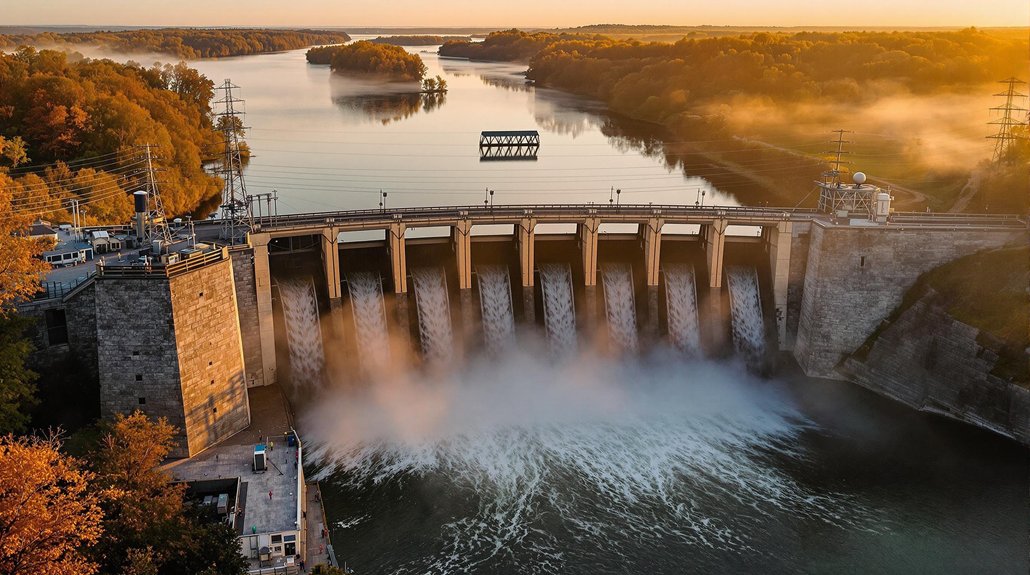Sturgis earned its “Electric City” nickname by going all-in on hydroelectricity in 1911. The municipal dam, 17 miles from city limits on the St. Joseph River, cost a whopping $250,000 (ouch!) but has saved the town $56.6 million since. Despite producing just 4% of current power needs, this century-old engineering marvel keeps chugging along. The dam’s impressive 33 gates and reservoir tell quite the electrifying tale.
While many small towns fade into obscurity, Sturgis, Michigan proudly wears its “Electric City” nickname—a title it’s carried since 1896. Not content with mere decorative monikers, the city backed up its ambitious title by establishing a municipal electric utility and installing a 150 kW AC generator in 1899. Demand skyrocketed. Surprise, surprise.
The citizens took a bold step in the early 1900s when electricity needs outgrew capacity. In a landslide vote—779 to 47—residents approved construction of Michigan’s first municipal hydroelectric dam. The $190,000 price tag? Equivalent to a whopping $4.61 million today. Not exactly pocket change for a small town.
Located 17 miles from city limits, the Sturgis Hydroelectric Dam began transforming the St. Joseph River‘s flow into electricity on September 3, 1911. Engineers didn’t mess around. They raised the historic Langley Covered Bridge by eight feet, installed 33 gates to control the river, and created Sturgis Reservoir. Like many large-scale dams of this era, it symbolized modernity through its promise of rural electrification and industrial growth for the region. The project actually exceeded its initial bond, with final construction costs reaching $250,000. The project was a marvel of early 20th-century engineering.
The original setup included primitive 2,300-volt oil switches, 23,000-volt lightning arresters, and six oil-cooled transformers. Power traveled along a 17-mile three-phase transmission line. Cutting-edge stuff for 1911.
Over a century later, the dam soldiers on. Its total capacity reached 2,600 kilowatts after two 750 kW units were added in 1982, supplementing the original 550 kW Allis-Chalmers generators. The facility still produces less than 4% of Sturgis’ electricity needs. Not impressive until you consider the estimated $56.6 million it’s saved the city. With its low operating costs and long lifespan, the dam exemplifies the economic viability that makes hydroelectric power attractive.
The dam hasn’t been without drama. Emergency repairs in 2016 required drawing down the reservoir by three feet, sending local farmers into irrigation panics. Yet through rain, drought, and modernization, this centenarian continues operating.
For 110+ years, the Sturgis Dam has fueled economic growth, attracted businesses, and generated revenue for city improvements. Not bad for a project from the horse-and-buggy era.








